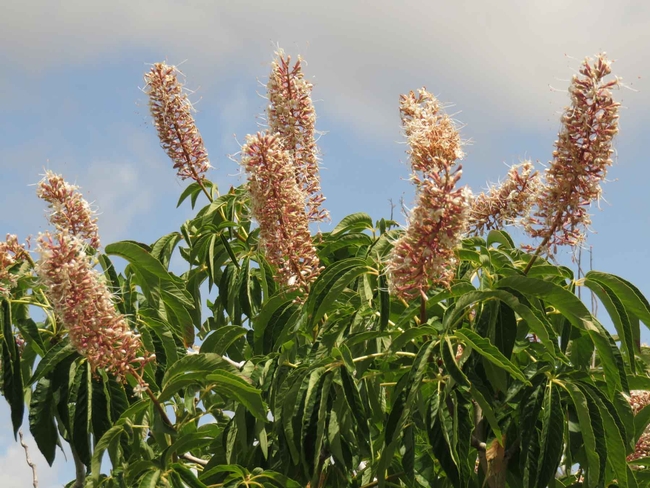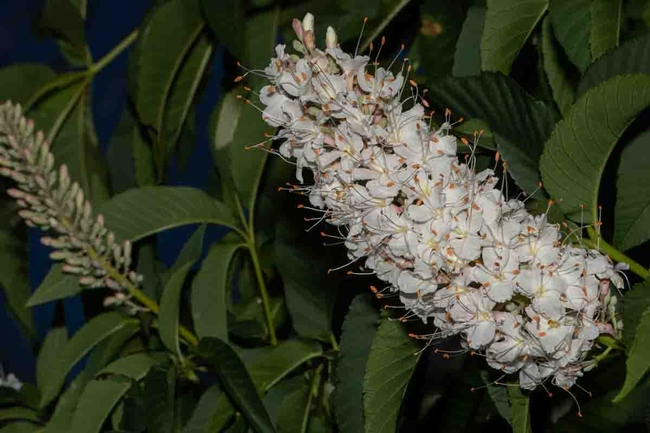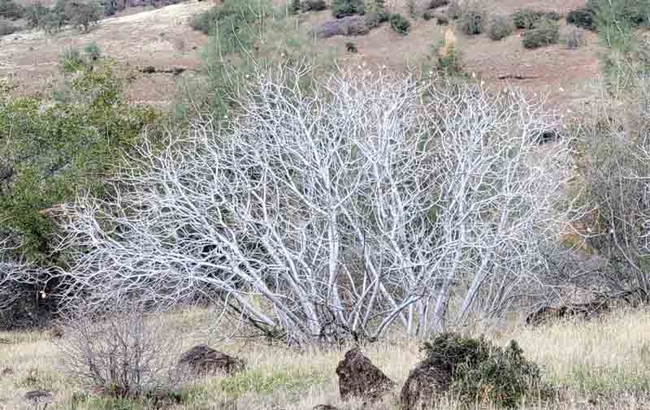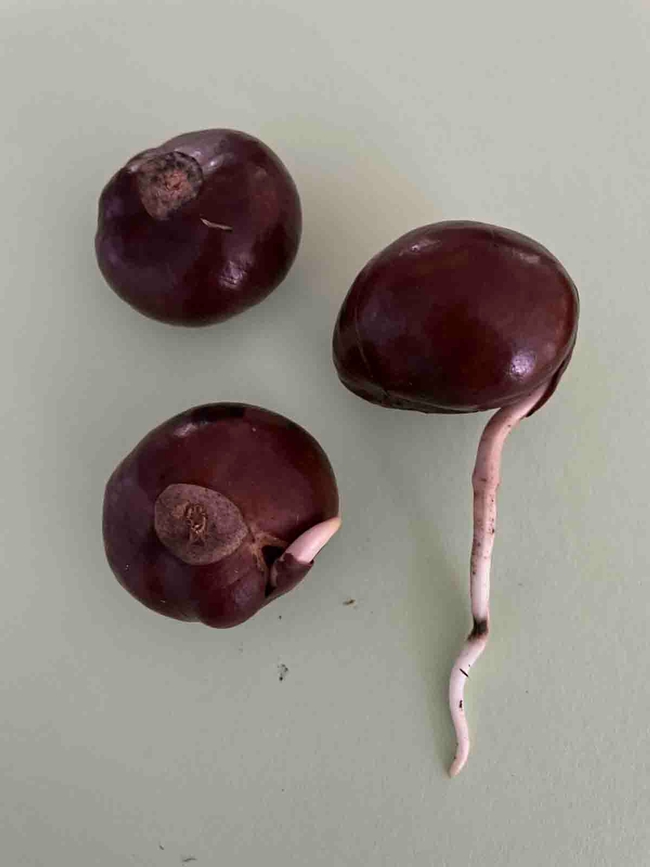[Note: Buckeye (Aesculus californica), gray pine (Pinus sabiniana), and blue oak (Quercus douglasii) are tree species that thrive in rugged local foothill woodland and chaparral habitat. In the last two editions, we covered the blue oak and the gray pine. This final installment explores the buckeye. All three species rely on adaptive strategies evolved over time allowing them to thrive in their challenging environment.]

Aesculus californica is a woody shrub or small tree that has adapted to a variety of microclimates in our state: it can be found along the central coast and in the foothill and lower montane elevations of the Sierra Nevada and Cascade Ranges. It grows as far north as the foothills of the Siskiyou Mountains, and as far south as northern Los Angeles County. Native buckeyes can grow in elevations as high as 4,000 feet (one source claims 5,500 feet), but most commonly these plants colonize the foothill altitudes. A true California native, it is found nowhere else in the world.
Buckeyes are a beautiful and striking presence on the landscape. In fact, this native is so lovely that it is used as an ornamental plant for its attractive lime green palmately compound leaves[JHC1] (shaped like the palm of the hand) composed of between 5 and 7 individual leaflets, fragrant white flowers, and handsome, thick-stemmed, smooth silver bark. Its stands out visually from its fellow foothill species precisely because of its evolutionary adaptations: it is the first to leaf out in the spring; the last to bloom; and the first to lose all its leaves. In particularly hot, dry years, the leaves can drop prior to the blooms, making the large, showy flowers (up to 12 inches long) even more conspicuous. When leafless, the skeletal structure of mature buckeyes appears to be sculpted and arranged by the hand of an artist.

The seeds of Aesculus californica are contained in a thick leathery husk, which splits when dried, and are the largest of any non-tropical plant species. These seeds (also called nuts) are the origin of both of its common names: buckeye and horse chestnut. According to Cal Poly's Select Tree web page, Native Americans called the seed "hetuck" (buck eye) because its markings resemble the eye of a deer. The seeds also resemble those of the European sweet chestnut (Castanea sativa). And there the resemblance ends, as the heavy seeds of the California buckeye are toxic, thus limiting its reproductive dispersal strategies to rolling downhill or being conveyed by water.

Surviving Drought and Fire: Buckeyes employ two of the most successful adaptations to Mediterranean climates: drought avoidance and a long taproot. These trees begin their annual growth cycle in the late winter and early spring rainy season, and enter dormancy in summer. By shedding their leaves early, they avoid loss of water from transpiration through the leaves. This adaptation to our long, hot, dry summers gives the plant a nice long rest period before the rains begin.

Native American Uses: Native groups did find the buckeye nut to be of some use as a food supply despite its toxicity, primarily when acorn harvests were sparse. They rendered the buckeye seed palatable by boiling and leaching the toxin out of the nut meats for several days, after which the nuts could be ground into meal similar to that made from acorns.
The same toxin that limited the buckeye seed to a food source only in times of hunger was used to snare a more delicious high protein food source. Native California tribes, including the Pomo, Yokut, and Luiseño, cleverly used the ground-up powder of buckeye seeds to stupefy schools of fish in small streams, making them easier to catch. And the smooth, straight branches of the buckeye made it useful to native peoples as a bow drill and a fire drill.
Our native buckeye is a California beauty and a hardy survivor in some of the least hospitable habitats. In the biological contest for survival, this tough, gorgeous plant holds a winning hand.
UC Master Gardeners of Butte County are part of the University of California Cooperative Extension (UCCE) system. To learn more about us and our upcoming events, and for help with gardening in our area visit our website. If you have a gardening question or problem, email the Hotline at mgbutte@ucanr.edu or leave a phone message on our Hotline at 530-552-5812. To speak to a Master Gardener about a gardening issue, or to drop by the MG office during Hotline hours, see the most current information on our Ask Us section of our website.